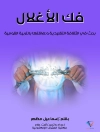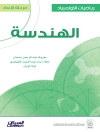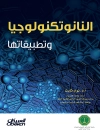Engage students in mathematics using growth mindset techniques
The most challenging parts of teaching mathematics are engaging students and helping them understand the connections between mathematics concepts. In this volume, you’ll find a collection of low floor, high ceiling tasks that will help you do just that, by looking at the big ideas at the first-grade level through visualization, play, and investigation.
During their work with tens of thousands of teachers, authors Jo Boaler, Jen Munson, and Cathy Williams heard the same message–that they want to incorporate more brain science into their math instruction, but they need guidance in the techniques that work best to get across the concepts they needed to teach. So the authors designed Mindset Mathematics around the principle of active student engagement, with tasks that reflect the latest brain science on learning. Open, creative, and visual math tasks have been shown to improve student test scores, and more importantly change their relationship with mathematics and start believing in their own potential. The tasks in Mindset Mathematics reflect the lessons from brain science that:
* There is no such thing as a math person – anyone can learn mathematics to high levels.
* Mistakes, struggle and challenge are the most important times for brain growth.
* Speed is unimportant in mathematics.
* Mathematics is a visual and beautiful subject, and our brains want to think visually about mathematics.
With engaging questions, open-ended tasks, and four-color visuals that will help kids get excited about mathematics, Mindset Mathematics is organized around nine big ideas which emphasize the connections within the Common Core State Standards (CCSS) and can be used with any current curriculum.
Tabela de Conteúdo
Introduction
Low Floor, High Ceiling Tasks
Youcubed Summer Camp
Memorization versus Conceptual Engagement
Mathematical Thinking, Reasoning, and Convincing
Big Ideas
Structure of the Book
Activities for Building Norms
Encouraging Good Group Work
Paper Folding: Learning to Reason, Convince, and Be Skeptical
Big Idea 1: Seeing Patterns inside Numbers
Visualize: Visualizing Numbers
Play: What Could It Be?
Investigate: How Flexible Is a Number?
Big Idea 2: Building and Designing with Shapes and Angles
Visualize: Tile It!
Play: Those Crazy Rep-Tiles
Investigate: Polyiamonds
Big Idea 3: Making and Naming Number Patterns
Visualize: Finding Fibonacci
Play: Pattern Carnival
Investigate: All Hail!
Big Idea 4: Units Are a Relationship
Visualize: It’s All in the Axes
Play: Measure Up
Investigate: 10, 000 Steps
Big Idea 5: Modeling with Unit Fractions
Visualize: Perplexing Measures
Play: Tangram Designs
Investigate: Pixeled Fractions
Big Idea 6: Fraction Equivalence
Visualize: Painting Pieces
Play: Color-Coding Fractions
Investigate: Tiling Rectangles
Big Idea 7: Illustrating Multiplication and Division
Visualize: Visual Proof
Play: Cover the Field
Investigate: Table Patterns
Big Idea 8: Using Operations Flexibly
Visualize: How Crowded Is the Crowd?
Play: Target 20
Investigate: Supply Parade
Big Idea 9: What Is a Decimal?
Visualize: Finding the Better Deal
Play: Decimals on a Line
Investigate: Can You Make It?
About the Authors
Acknowledgments
Index
Sobre o autor
JO BOALER is a professor of mathematics education at Stanford University and co-founder and faculty director of youcubed. She serves as an advisor to several Silicon Valley companies and is a White House presenter on girls and STEM (Science, Technology, Engineering, and Math). The author of seven books, including Mathematical Mindsets, and numerous research articles, she is a regular contributor to news and radio in the United States and England.
JEN MUNSON is a doctoral candidate at Stanford University, a professional developer, and a former classroom teacher. She works with teachers and school leaders across the U.S. to develop responsive, equitable mathematics instruction.
CATHY WILLIAMS is the co-founder and the executive director of youcubed at Stanford University. Before working at youcubed she was a high school math teacher and worked in mathematics curriculum and administration at the county and district levels in California.












